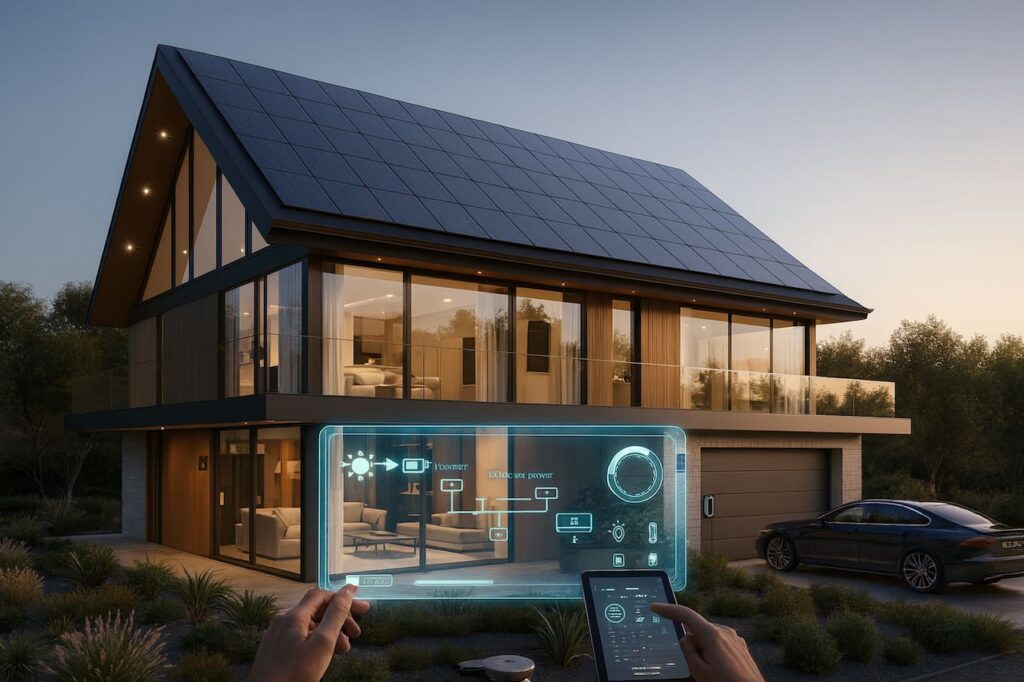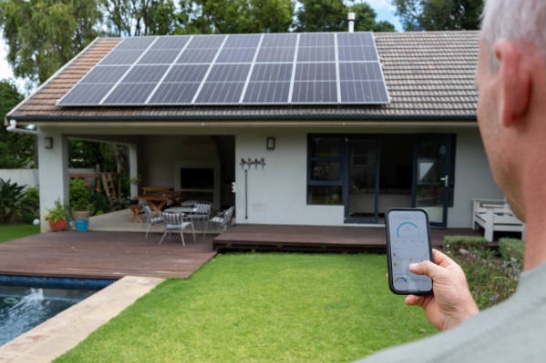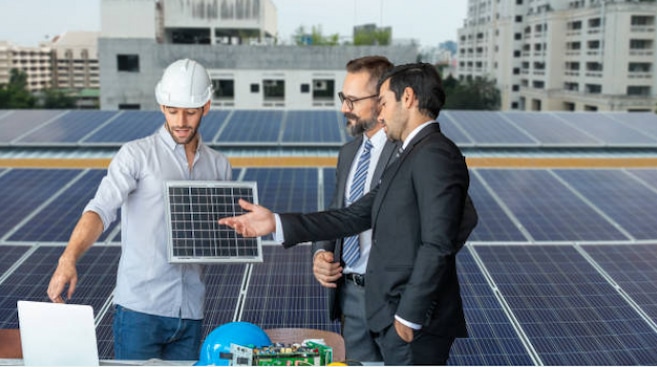Integrating Solar Panels with Smart Home Tech Easily
Integrating Solar Panels with smart home technology is revolutionizing the way we consume and manage energy. With rising energy costs, environmental concerns, and technological advances, this combination provides a powerful solution for homeowners to optimize energy use, reduce utility bills, and enhance their living experience. By combining solar panels with smart home systems, homeowners can create a highly efficient, connected, and sustainable living environment.
In this article, we will explore the benefits of integrating solar panels with smart home technology, how it works, and the seamless approach to achieving an energy-efficient home.

1. The Power of Solar and Smart Home Integration
Solar energy is an excellent renewable energy source, and when combined with smart home technology, it offers an unprecedented level of control, efficiency, and sustainability. Smart home systems are designed to manage and automate various home functions, including lighting, security, heating, and energy usage. By integrating solar panels with these systems, you can optimize the generation and consumption of solar energy in real-time.
When solar panels are connected to smart home devices like thermostats, lighting, and energy monitors, homeowners gain the ability to:
- Monitor and track solar energy production
- Control and adjust energy consumption based on availability
- Automate energy-saving tasks to reduce wastage
- Manage power storage for use during peak hours or power outages
This integration creates a smart energy ecosystem that allows you to optimize your energy usage, improve the efficiency of your solar panels, and ultimately lower your carbon footprint.

2. How Solar Panel Integration with Smart Home Devices Works
Integrating solar panels with smart home technology involves connecting your solar inverter (which converts DC electricity to AC power) to a home automation hub. From there, smart home systems can communicate with the solar inverter, energy storage systems (like solar batteries), and other devices to manage energy use efficiently.
Here’s a breakdown of how this integration works:
a. Energy Monitoring and Control
Smart energy monitors track the amount of electricity generated by your solar panels and consumed by your home. By integrating this monitor with a smart home hub like Amazon Alexa or Google Home, you can:
- View real-time energy data through an app or voice commands
- Set usage limits for certain appliances or areas of your home
- Optimize energy use based on solar generation (e.g., run appliances when solar power is abundant)
b. Solar Battery Storage Integration
Solar batteries allow you to store excess energy generated during the day for use at night or on cloudy days. Smart home systems can manage when to store and discharge energy, ensuring that you’re using solar power when it’s most needed and reducing reliance on grid energy during peak times. For example, the system can store energy during the day and use it to power your home during the evening when electricity demand is higher, lowering your energy costs.
c. Automation of Home Functions
Smart thermostats and lighting systems can be synced with solar power availability. For example:
- Smart thermostats can adjust heating or cooling when there’s enough solar energy, ensuring your heating and cooling systems run efficiently.
- Smart lighting can be programmed to dim or turn off automatically when your solar energy levels are low, optimizing energy consumption.
This automation reduces wasted energy and allows for a more seamless energy management process, ensuring that your home is always running at peak efficiency.

3. Benefits of Integrating Solar Panels with Smart Home Technology
a. Enhanced Energy Efficiency
When solar panels are integrated with a smart home system, you can optimize both solar energy production and usage. The system can track energy generation and consumption patterns and adjust settings automatically. This maximizes energy efficiency by ensuring you only use power when it’s most cost-effective and sustainable.
For instance, energy-intensive appliances like washing machines or dishwashers can be scheduled to run during the day when solar energy is most abundant. By doing so, you reduce reliance on grid electricity, lowering both your energy bills and carbon footprint.
b. Lower Energy Bills
One of the primary reasons to invest in both solar panels and smart home technology is the potential for lower energy bills. Smart systems can automate energy-saving tasks, such as turning off lights, adjusting the thermostat, or running appliances on solar power. With solar battery storage, you can store energy for later use, further reducing the need to purchase electricity from the grid.
By using solar energy during peak hours or in the evening, you can also take advantage of time-of-use pricing, where electricity is cheaper when demand is lower, maximizing savings.
c. Increased Control and Convenience
Integrating solar panels with smart technology gives you complete control over your energy consumption, whether you’re at home or away. Smart apps and voice assistants allow you to monitor and control your energy systems from anywhere, ensuring that your home is running efficiently at all times.
For example, you can check your solar production and consumption when on vacation or ensure that the home’s heating system is using stored solar energy, even if you’re not there to manually adjust settings.
d. Real-Time Data and Insights
Solar and smart home integrations provide detailed insights into your energy use. Real-time monitoring allows you to see how much energy is being produced, consumed, and stored, enabling you to identify areas for further optimization.
By analyzing this data, you can adjust your lifestyle or home functions to make more efficient use of your solar energy, ultimately leading to further cost savings and sustainability.
4. Future-Proofing Your Home
Integrating solar panels with smart home technology is an investment in the future. As technology continues to evolve, the potential for smarter, more efficient systems will increase. Future advancements in AI-powered energy management and smart grids will allow for even more precise control and efficiency, ensuring that your home remains ahead of the curve in energy management.
With more homeowners seeking sustainable, cost-effective solutions, a solar-powered smart home not only adds value to your property but also aligns with the global shift toward green energy and sustainability.
5. Getting Started: How to Integrate Solar Panels with Smart Home Technology
To get started with integrating solar panels into your smart home system, follow these steps:
- Choose a compatible solar inverter that can integrate with your smart home hub or energy monitoring system.
- Install smart energy monitors that track solar generation and energy consumption across the home.
- Set up energy storage solutions (solar batteries) to store excess power for later use.
- Integrate smart thermostats, lighting, and appliances into the system for complete automation.
- Monitor and adjust energy usage through your smart home app to ensure efficiency and savings.
Conclusion: A Seamless and Sustainable Energy Future
Integrating solar panels with smart home technology is a seamless way to reduce energy costs, increase efficiency, and contribute to a more sustainable future. With enhanced control, real-time data insights, and automation, your solar-powered home will not only be more energy-efficient but also more convenient and future-ready.
By adopting this integrated approach, you’re not just investing in technology; you’re investing in a smarter, greener lifestyle that benefits both your wallet and the planet.
